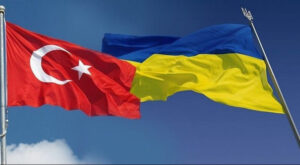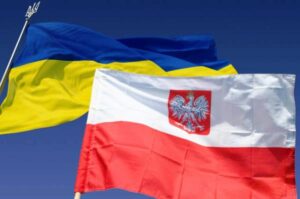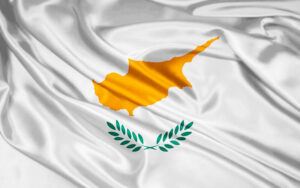
Ukrainian startup Swarmer, which develops artificial intelligence-based solutions for drone autonomy, has announced a $15 million Series A funding round, which it says is the largest investment in a Ukrainian defense technology company since the start of the war.
According to the company’s press release, the round is led by Broadband Capital Investments with participation from R-G.AI, D3 Ventures, Green Flag Ventures, Radius Capital, and Network VC.
“Our software has proven its effectiveness in real combat conditions during tens of thousands of missions,” said Swarmer founder and CEO Serhii Kuprienko in the press release.
“Swarmer’s technologies have already proven their effectiveness on the battlefield. This historic investment will enable the company to provide swarm capabilities to every UAV — it will be possible to deploy an unlimited number of drones and robots, regardless of the number of trained pilots,” First Deputy Prime Minister and Minister of Digital Transformation Mykhailo Fedorov wrote on Telegram on Tuesday.
The release also states that using data from more than 82,000 of its own combat missions and millions of others, the system is trained to replicate the results of the best pilots and make accurate tactical decisions in real time.
The company emphasizes that Swarmer has successfully demonstrated the operation of swarms of 25 drones working together in the absence of GNSS. In the near future, it plans to demonstrate operations using various types of weapons, involving more than 100 drones of different types working in coordination to seamlessly integrate UAS, USV, UGV, and stationary launchers into a single swarm that will function as a single unit.
The company was founded by Sergey Kuprienko and Alex Fink in May 2023.


Turkey remains one of the most positively perceived countries in the region for Ukrainians, driven by both political and economic factors. This is evidenced by the results of an all-Ukrainian survey conducted by Active Group in cooperation with the Experts Club information and analytical center in August 2025.
According to the survey, 52.3% of Ukrainian citizens have a positive attitude towards Turkey (43.3% – mostly positive, 9.0% – completely positive). Only 8.0% of respondents expressed a negative attitude (7.3% – mostly negative, 0.7% – completely negative). Another 38.3% of Ukrainians are neutral, and 1.7% admitted that they do not know enough about this country.

“For Ukraine, Turkey is not just a neighbor across the Black Sea, but a strategic partner with whom we have established close trade and economic ties. In the first half of 2025, the volume of bilateral trade exceeded $4.66 billion, of which exports from Ukraine amounted to more than $2.58 billion and imports from Turkey amounted to about $2.08 billion. The positive balance of more than $500 million shows that these relations are beneficial for the Ukrainian economy,” said Maksym Urakin, founder of Experts Club.
In his turn, Oleksandr Poznyi, co-founder of Active Group, noted that the high level of positive assessments is explained not only by economic factors.
“Turkey is actively supporting Ukraine, which cannot be ignored by society. At the same time, the tourist destination, cultural contacts, and historical proximity through the Black Sea region create an additional level of sympathy among Ukrainians. This allows Turkey to occupy a consistently high position among the countries friendly to Ukraine,” he added.
The survey was part of a broader study of international sympathies and antipathies of Ukrainians in the current geopolitical context.
The full video can be viewed here:
https://www.youtube.com/watch?v=YgC9TPnMoMI&t
You can subscribe to the Experts Club YouTube channel here:
https://www.youtube.com/@ExpertsClub
ACTIVE GROUP, DIPLOMACY, EXPERTS CLUB, Poznyi, SOCIOLOGY, TRADE, TURKEY, URAKIN


Poland remains one of the most positively perceived countries by Ukrainians, despite some controversies in bilateral relations. This is evidenced by the results of an all-Ukrainian survey conducted by Active Group in cooperation with the Experts Club information and analytical center in August 2025.
According to the survey, 56.7% of Ukrainian citizens have a positive attitude towards Poland (44.3% – mostly positive, 12.3% – completely positive). Only 12.7% of respondents expressed a negative attitude (11.3% – mostly negative, 1.3% – completely negative). Another 30.0% of Ukrainians are neutral, and 1.0% said they are not sufficiently aware of this country.

“For Ukrainians, Poland is not only a neighbor, but also one of their key economic partners. In the first half of 2025, total trade between Ukraine and Poland exceeded $6.66 billion. At the same time, exports from Ukraine amounted to $3.03 billion, and imports from Poland exceeded $3.62 billion. The negative balance of $591 million does not seem critical, given the scale and strategic nature of cooperation,” said Maksym Urakin, founder of Experts Club.
In turn, co-founder of Active Group Oleksandr Poznyi emphasized that the positive attitude of Ukrainians towards Poland has deeper reasons than just the economy.
“We are talking about historical proximity, support for Ukrainian refugees, and Warsaw’s political solidarity in important international issues. At the same time, the economic dimension only strengthens these relations, making Poland one of Ukraine’s leading partners both in the EU and globally. It is the combination of political, humanitarian and economic components that explains the high level of sympathy in society,” he added.
The survey was part of a broader study of international sympathies and antipathies of Ukrainians in the current geopolitical context.
The full video can be viewed here:
https://www.youtube.com/watch?v=YgC9TPnMoMI&t
You can subscribe to the Experts Club YouTube channel here:
https://www.youtube.com/@ExpertsClub
ACTIVE GROUP, DIPLOMACY, EXPERTS CLUB, POLAND, Posniy, SOCIOLOGY, TRADE, URAKIN

Cyprus is ready to expand cooperation with Ukraine in the field of rehabilitation programs for citizens affected by the war. This was stated by the Ambassador Extraordinary and Plenipotentiary of the Republic of Cyprus to Ukraine, Michalis Firillas, during a meeting with a representative of Interfax-Ukraine.
“Cyprus is known not only as a resort country, but also for its modern medicine and high-quality rehabilitation services. We want to use this potential to help Ukrainians who need treatment and recovery from injuries and psychological trauma,” the diplomat said.

According to him, Cyprus already has a number of medical centers and clinics specializing in physical rehabilitation, post-operative recovery, and psychological support. “We are interested in creating joint programs with Ukrainian partners that will allow our medical institutions to accept more patients from Ukraine,” Firillas emphasized.
The ambassador added that this cooperation could include both the treatment of military and civilians, as well as training programs for Ukrainian doctors and rehabilitation specialists. “Our task is to ensure that Ukrainians receive quality care and support during the most difficult time for them,” he concluded.

Ukraine has announced a tender to conclude a production sharing agreement (PSA) for the Dobra lithium deposit (Kirovohrad region) to prospect, extract and enrich lithium, niobium, rubidium, tantalum, cesium, beryllium, tungsten and gold for a period of 50 years.
According to a report in the Uriadovyi Kurier newspaper and on the website of the Ministry of Economy, the minimum investment for exploration is the equivalent of $12 million, and for the organization of mining and processing of lithium-containing minerals and other metallic minerals – $167 million, but the final obligations are determined by the results of the tender. The total area of the site is 17.07 square kilometers, the deadline for submitting applications for participation in the tender is December 12, 2025, and the participation fee is UAH 0.5 million.
According to the terms, the maximum share of compensation products that will reimburse the investor for its costs is 70% of the total output until the investor’s costs are fully reimbursed, while the state’s share in profitable products should be at least 4-6%.
The Ministry of Economy clarified to Interfax-Ukraine that comparing such a share of the state in profitable products with a similar indicator for oil and gas PSAs, where it is significantly higher, is not correct, as this is the first PSA in the history of Ukraine for metal ores.
It is noted that the reserves and resources of lithium ores at the site were approved by decisions at the end of 2017 and in 2018 in the amount of C2 and P1 categories – 1 million 218.14 thousand tons (average Li2O content of 1.37%) and P2 – 70.6 thousand tons (average Li2O content of 1.43%).
Separately, the State Commission of Ukraine for Mineral Resources (SCR) noted the presence of prospective and inferred resources of associated mineral components (P1+P2) in lithium ores at Dobra: Ta2O5 – 4.75 thousand tons; Nb2O5 – 8.24 thousand tons; Rb2O5 – 104.07 thousand tons; BeO – 22.08 thousand tons; SnO2 – 4.46 thousand tons and Cs2O – 7.97 thousand tons.
“In addition, by the protocol dated 31.07.2002 No. 35, the resources of cat. P2 for the Novostankuvatske manifestation were estimated: Ta2O5 – 1414.22 tons (0.0127-0.0134%); Nb2O5 – 1734.5 tons (0.0163%); Li2O – 85196.1 tons (0.7541%); Rb2O5 – 9859.3 tons; Cs2O – 1493.6 tons; BeO – 3588.9 tons; SnO2 – 447.9 tons; WO3 – 8862.3 tons (cat. P3; 0.177%); at the Tashlykskoye ore occurrence: Ta2O5 – 480.32 tons (0.0106-0.0854%); Li2O – 13,596.4 tons (0.6291%); Rb2O5 – 1371.9 tons; Cs2O – 345.4 tons; BeO – 447.4 tons; SnO2 – 106.9 tons; Nb2O5 – 903.0 tons (0.0244%); Lutkivske deposit: WO3 – 2292.4 t (cat. P3; 0.101-0.378%); Kontaktovoye ore occurrence: Au – 2.05 t (4.08 g/ton); on the Stankuvatskoye ore occurrence: Au – 1.78 tons (1.3-2.5 g/t). For the Severostankuvatskoye ore occurrence, the operationally estimated Li2O resources are: cat. P1 – 269.93 thousand tons and cat. P2 – 140.82 thousand tons with an average Li2O grade of 1.3548%,” the announcement reads.
The winner of the tender must ensure geological exploration of the subsoil and international audit of reserves at the site within two and a half years and submit materials on the assessment of lithium and other metal minerals reserves to the State Committee for the approval of such reserves.
After the conclusion of the PSA, the investor is obliged, among other things, to prospect, extract and enrich (primary processing) lithium and possibly other metal minerals, and to ensure the comprehensive development and mining of the metal mineral deposit.
In addition, the PSA tender documentation for the first time includes obligations for the investor related to the agreement signed at the end of April this year to establish the US-Ukraine Reconstruction Investment Fund, which has the priority right to invest in new projects for the extraction of rare earth materials and purchase their products.
In mid-June, the head of the President’s Office, Andriy Yermak, said that the development of the Dobra lithium deposit could become the first pilot project in cooperation with the United States.
In early July, the mining investment company TechMet (Dublin), one of the largest investors of which is the US government through DFC, announced its interest in participating in the first PSA tender for lithium mining in Ukraine and, if it wins, building processing facilities with investments of more than $0.5 billion. Recently, a delegation of DFC accompanied by the heads of the Ministry of Economy of Ukraine visited Kirovohrad region.
At the same time, the US-based Critical Metals Corp also claims its rights to the Dobra site, linking them to the transfer of assets from Australia’s European Lithium, which, in turn, received these rights from Ukraine’s Petro-Consulting LLC.

NovaPay EU UAB (Lithuania), part of the leading Ukrainian financial service NoivaPay, together with its partner, the Polish payment institution Quicko sp. z o.o., has launched a European version of its financial app for customers in Europe.
“NovaPay EU announces the launch of its own European mobile application, created for Ukrainians and Europeans… From now on, users across the EU can download the NovaPay Mob mobile app and access payment services: open accounts in euros and zlotys, receive cards, make payments and transfers, and withdraw cash from ATMs,” the company said in a statement on Tuesday.
It is noted that the NovaPay app can be used from any EU country, but Poland is one of the most interesting markets, as many Ukrainians currently live there.
The company told the Interfax-Ukraine news agency that NovaPay’s European division is a separate business with its own team and legal entity, but it also operates under the NovaPay brand.
“The company is registered in Lithuania, but shares the same values: reliability, ease, and speed of financial services. Thanks to NovaPay EU’s launch partner, Quicko, a company that provides payment services and is licensed by the KNF, the launch took place as quickly as possible. Obtaining its own license in the EU remains part of NovaPay EU’s long-term plans,” the company said.
It is noted that the application was created primarily for Ukrainians abroad: today, more than 4.2 million Ukrainians are in the EU under temporary protection, of which almost 1 million are in Poland.
According to the release, in Ukraine, the parent company NovaPay, which is part of the NOVA group of companies (Nova Poshta), is one of the market leaders and currently serves about 800,000 customers—in the app, online, and offline. In Ukraine, NovaPay became the first non-bank financial institution to receive a license from the NBU to open accounts, issue cards, and launch its own non-bank payment app.
NovaPay EU UAB was established in 2022 as the European brand of NovaPay, part of the NOVA group. The company does not currently have a license and does not provide financial services in the EU.
Quicko sp. z o.o. was founded in 2009 and is a certified national payment institution regulated by the Polish Financial Supervision Authority (KNF). Quicko is licensed by Mastercard Principal Member to issue cards and offers card issuance solutions through a multifunctional wallet, SDK, and API services for businesses and individuals across the European Economic Area.